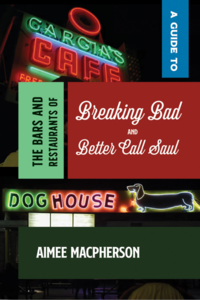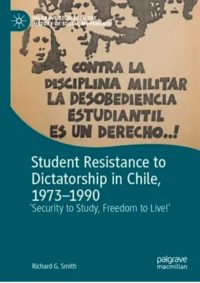OFF THE SHELF: NOVEMBER 2024

OFF THE SHELF: NOVEMBER 2024
This month Oxford at war, Margery Ord, criminality in New Mexico, a history of migration and Chilean student resistors
Published: 5 November 2024
Author: Richard Lofthouse
Share this article

Oxford’s War 1939-1945 by Ashley Jackson (Bodleian Library Publishing, October 2024)
Consider this volume for Christmas presents. It hits perfect pitch for being at once scholarly and a delightful narrative. The author starts by building a mesmerizing portrait of Oxford on the brink of World War Two, one that is distinctly chilly, a bit brown wall paper, much smaller than now with a population of 80,000 and all the outlying villages ‘outside’ the city: Iffley, Botley, Kidlington, even Marston. The countryside market town can be smelt still, with lowing cattle driven into the centre for auction; and yet the industrial throb of Cowley and the noise of the motorcar were already there, rather obtrusively. The author has a mastery of his material. Gilbert Scott’s New Bodleian Library (1937-40) was described as ‘the appearance of ‘a dinner jacket made of Harris Tweed’’. Yet in other ways the medieval street complex around St Ebbe’s still allowed John Betjeman to recall Thomas Hardy’s Christminster in his 1938 An Oxford University Chest. The Varsity line train, back on the agenda after the recent 2024 Labour Budget, (at least to Milton Keynes by 2025 and maybe Bedford by 2030, Cambridge by 2050?), chuffed happily out of a dedicated secondary terminus on the site of today’s business school.
But then the war! C.S. Lewis’ brother Warnie chugged up and down the Thames aboard a cabin cruiser as part of a self-styled Upper Thames Patrol, ‘a riverine ‘Dad’s Army’ irreverently known as ‘Up the Pub.’’
It’s too easy to get carried away with the non-smart phone existence, booked-ended by grey flannel trousers and real human beings talking to each other. But hindsight flattens the lived experience. There was genuine fear and an assumption that the ancient stones would be pulverised from the air. Oxford could have been a British Dresden. But the fundamental truth is that Oxford enjoyed a very good war. First there was ‘Hitler’s Gift’ in the form of world leading scientists and other refugee scholars, 27 of them at the University by February 1939 but perhaps 300 in total if we include ‘non-faculty’. It was precisely the anti-insular wake-up call that Oxford needed so desperately. Secondly, the city was spared destruction because Hitler wanted it as his HQ. Thirdly, the University became jolly useful to the war effort, through its buildings, its press, its people, and above all on account of its research: Florey’s team and penicillin, the many who ended up at Bletchley Park (many women, still being uncovered due to the Secrets Act they signed); Churchill’s chief scientific advisor Sir Frederick Lindemann, previously Einstein’s host and during the war Paymaster General, a Cabinet seat and a privy counsellor. Down the High at Univ was Sir William Beveridge, compared in appearance to ‘a gargoyle thatched with white hair’, perhaps more than any other individual the architect of the post-war Britain with its welfare state.
This barely scratches the surface. The buildings were requisitioned by numerous tentacles of government. The well-to-do of North Oxford took in grubby evacuee children, sometimes reluctantly we find out. OUP played an enormous role printing war material, especially for Naval Intelligence. There were black-out curtains, quadrangle vegetable patches, a much reduced University function and tanks of water positioned all over the city centre to quell fires when the bombs dropped.
Instead, and the wonderful cover repro of John Nash’s Romantic-modernist painting of Oxford shows this against a luridly part-pink sky (1942), the bombers (depicted in the painting so imperceptibly that you barely notice them at first sight, like a flock of birds) overflew the city for Coventry, whose infernos created a glow in the sky that could be seen from the spires.
There is a generous range of terrific, all-colour plates that almost makes the book itself a prosperous relic of the twentieth century rather than some sort of AI-generated horror show.
But I think what the author does best (he of Oxford but now we concede a Professor of Imperial and Military History at King’s College, London) is conjure up the humanity of the University. This is terribly affecting in places, the idea for instance that a college was no longer just the intimate community of scouts, students and dons, but ‘a group of people scattered throughout the world,’ so that the college becomes this reference point and the pots of marmalade pulse-quickening and comforting, seen from abroad or from within the college walls, and during a war that was unquestionably menacing even if death remained ‘abroad’, which viewed from any SCR included Coventry. Never before did the medieval stones carry such warmth of permanence. Some of that imaginative sustenance endures for all time (penned on the day of the US Election).

Pathways Reflections of a Female Scientist by Margery G. Ord (Ed. Nicola L. Bull), Holywell Press, 2024.
This memoir by Oxford’s first tenured biochemist, the late Margery Ord (1927-2020) also has a chunk of World War Two in it, told from the perspective of growing up in Portsmouth before Margery came to Lady Margaret Hall at a post-doc in 1951, following her PhD at London University.
There’s a brilliant early anecdote, ‘the day after the Dieppe raid, in the summer of 1942.’ Margery was fifteen and the family home was in Southsea, where swimming ‘off the front’ was still permitted as long as you were resident. She and her friend Joan ‘were swimming when we saw a fleet sailing up the Solent. A raid started, with the German bombers attacking the returning ships so we rapidly dressed, in a glass-covered shelter on the front, and went back to the Aylens’ house in Victoria Road’. She remembers being picked up by her father in the car later, in a lull, uselessly clutching a tin hat. Later, she found out that her mother ‘had been unpleasantly surprised by a German plane flying low over Purbrook, as Ma was getting something from the garden.’
One of the colour plates in Oxford’s War offers us the exceptionally detailed artwork from the cover of Biggles Defies the Swastika, published as propaganda by OUP, depicting a Luftwaffe flying boat going down, while Biggles’ bi-plane goes up. The sense of the enemy at near hand yet sinisterly concealed by technology resonates with recent narratives from Ukraine just as it is suspended in our historical imagination eight decades after the event.
Such details do not adequately convey a memoir divided sensibly into three parts by editor Nicola Bull (LMH, 1972): biographical memories, global travel and science. Yet volumes like this one are to be read with no particular goal, Margery’s achievement being exactly these vividly retold, often secondary details about Aunts and cakes and gardening, that beautifully capture the age, and the life, that was lived.
If there is a unifying theme it is the college Lady Margaret Hall, and Ord’s many former students and others who fondly remember Margery’s presence in the college, and her trademark ‘pudding basin haircut’, will no doubt want to obtain a copy.
Oxford’s science was on the rise but it remained a work in hand, following the generous donations by Lord Nuffield in the 1930s. Margery notes of the early 1950s when she arrived, ‘Being a member of the SCR at LMH was initially something of an ordeal. The college, like the University generally, was arts oriented. One or two Fellows thought scientists were uneducated; I had at least done Latin for six or seven years at school…But Lucy Sutherland [then Principal] and the more senior Fellows were always supportive and by the late 1950s, after Mary O’Brien (maths) and Wilma Crowther (zoology) had also become Fellows, any tensions eased.’
By the 1960s, serving on the Franks Commission appointed to review Oxbridge, Dr Ord notes that the women’s colleges had by then served to make Oxbridge the national leader in female academic appointments, if measured by raw numbers. 1950-1970 were critical years of scientific transformation at Oxford. Margery Ord spearheaded one arm of it in the relatively new field of biochemistry, which studies the chemical processes within living organisms, and trips to Scotland to study sea urchins had to be supplemented by imported greens, there being no vegetables to buy and a fear of rickets – a world away from the weight loss drugs of 2024.
The laboratory is ever present and far-flung travel is a fascinating and significant chunk of the book. Dr Ord’s support for wildlife conservation has a legacy to this day because LMH is a base for WildCRU, the University’s conservation research unit. The memoir also mentions research into lewiscite, a nerve agent intended for use as a chemical weapon, and the effect on cells of radiation after the dropping of the atomic bomb. Such details are too easily brushed over now that we live in an era where nothing ‘bad’ is allowed to touch college investments, but for Margery’s generation coming out of the war, it was normal, and Oxford participated. In the world we’re in now such subjects are proximate again, troubling though it is.

A Guide to the Bars and Restaurants of Breaking Bad and Better Call Saul by Aimee Macpherson (University of New Mexico Press, September 2024)
Now for a serious change of direction. The author (Pembroke, 2008) studied English Literature, then went off to film Better Called Saul in New Mexico, where she now resides in Albuquerque. The show emerged from Breaking Bad around 2013, and featured con-artist Jimmy McGill turned attorney, growing by twists and turns into a morally challenged criminal lawyer. By email, writes of her book: ‘In brief: a love letter to diner coffee and the criminals who drink it’. While it will help to be acquainted with the specific TV behind the book, nonetheless the book takes you straight into a food culture, actually a culture in which food is the magnet, that is also the hot desert air of a place in the US that very few tourists reach. There’s a strong case for buying such a book, reading it, watching the TV and then visiting. Europeans commit the regular sin of homogenising US culture as though it were one. It is not.
‘From the Dog House to Savoy Bar and Grill, from Tuco’s Hideout to Los Pollos Hermanos and every pit stop in between, Macpherson takes us on a tour of the Duke City’s dreamscape of edible artifacts, connecting us to the on-screen heroes and villains we love and admire. Show by show, season by season, Macpherson reveals how
restaurants and bars undergo hours of painstaking transformations before appearing on the small screen. Colourful photography and descriptions of the food and drink accompany Macpherson’s insider show analysis. While this book can’t give you the taste of Mike’s pimento cheese sandwich, it does deliver a flavour of the city that has been a main character in this successful franchise from the time Walter White first broke bad in 2008.’

The Shortest History of Migration by Ian Goldin (Old Street Publishing, 2024)
Professor Ian Goldin was the founding Director of the Oxford Martin School from September 2006 to September 2016, now a Professorial fellow of Balliol College. But as this super volume makes clear, his grandparents fled genocidal violence in Lithuania and Germany and he has been a net beneficiary in the straightforward sense that had they not fled, he wouldn’t have been born. His own career took him into and out of South Africa, and back again at the side of Nelson Mandela; later to the US, and to Oxford. By taking the very long view, 300,000 years, he can show that a flexible attitude to moving around the world has been at the very heart of human flourishing. Humankind emerged from Africa to occupy all continents by 25,000 years ago, and then came the exchange of technologies such as the wheel.
Forced migration defined slavery while the disease that attended the colonisation of the Americas decimated local populations. Come the mid-Nineteenth Century, the world still seemed like a boundlessly open and underpopulated world, and passports were seldom encountered before World War One. In a fast-paced book, Ian offers very useful, ultra-brief summaries of massive migration catastrophes such as the British partition of India which led to 2 million deaths in 1947, and the following year with the creation of Israel: ‘Of the 950,000 Palestinian Arabs resident in what became Israel, 726,000 were expelled or fled, creating a persistent and escalating refugee crisis.’
Martin School research is shared to demonstrate that routinely the perception of migration numbers among the voting public is far higher than the reality, which has steadily remained at around 3% of the world’s population across the past few decades. The problem though – which Goldin acknowledges - is that the underlying global population has mushroomed, so that 3% is a much larger number. Populist politicians exploiting migration are deliberately playing with fire, however, he argues; there is a photograph of Trump’s wall with Mexico. Keeping a human scale, Ian offers cameos of particular individual such as Chilean poet Pablo Neruda and South African singer Miriam Makeba. There is a haunting photo of a mother from Dustbowl America and a reminder that much migration is internal, even if is therefore merely ‘relocation’. Voluntary migrants who want a better lot cannot be assured of their wishes, but the international expectation that a refugee be given asylum is an enduring good. Much confusion exists at the margins of these two (English Channel people-smuggling is one example) yet the principles are clear. The most generous host country relative to its size is Jordan, but the other big hosts are, aside from Germany, Colombia, Turkey and Iran. Just 14% of global migrants are from Africa. I suspect very few readers will know these facts. In some ways however the book rucks up against reality even in the weeks since it was published. Towards the end the author quotes Stephen Castles, ‘but one thing is clear: there is no return to the neat idea of closed-off nation-states with homogeneous national communities.’ Austria's far-right Freedom Party (FPÖ) won the recent election in Austria, partly on precisely this identitarian idea and the policy idea of remigration, or what previously was known simply as deportation.

Student Resistance to Dictatorship in Chile, 1973-1990 'Security to Study, Freedom to Live!' by Richard G Smith, (Palgrave, November 2024)
Oxford, besides numerous other western campuses, has experienced an ‘encampment’ in 2024, where students have occupied a piece of land and erected tents and artefacts of protest. By sheer coincidence yet not without Twain-esque rhymes of history, here comes this sober academic account of an earlier history of student protest in Chile. We asked the author Richard (St Catherine’s, 1980, now University of Liverpool) where Chile sits in the broader history of student protest and he reminds us that the main example of student protests were in late-1960s America around Civil Rights, and later anti-Vietnam War protests, both involving encampments and sit-ins. Before the current protests over Gaza, there was Greta Thunberg’s climate protest, and before Greta there was Hong Kong, and Tiananmen Square in 1989. The personal risk taken on by the protesters in 2024 Oxford pales in comparison to what this book documents, and some of the above-mentioned sites of protest.
Off the Shelf typically concerns books where there is an Oxford connection, whether the place, the University or of course the author. Our editorial selection rests on books appealing to the broadest alumni audience.
For more recommended books from Oxford academics and alumni, head over to the @oxfordalumni social channels on Instagram, Facebook and X.
Alumni can claim 15% discount in any Blackwell's store with a My Oxford Card.
Alumni can claim 20% discount at Oxford University Press.
Join the Oxford Alumni Book Club at: www.alumni.ox.ac.uk/book-club
Lead Image: Getty Images















